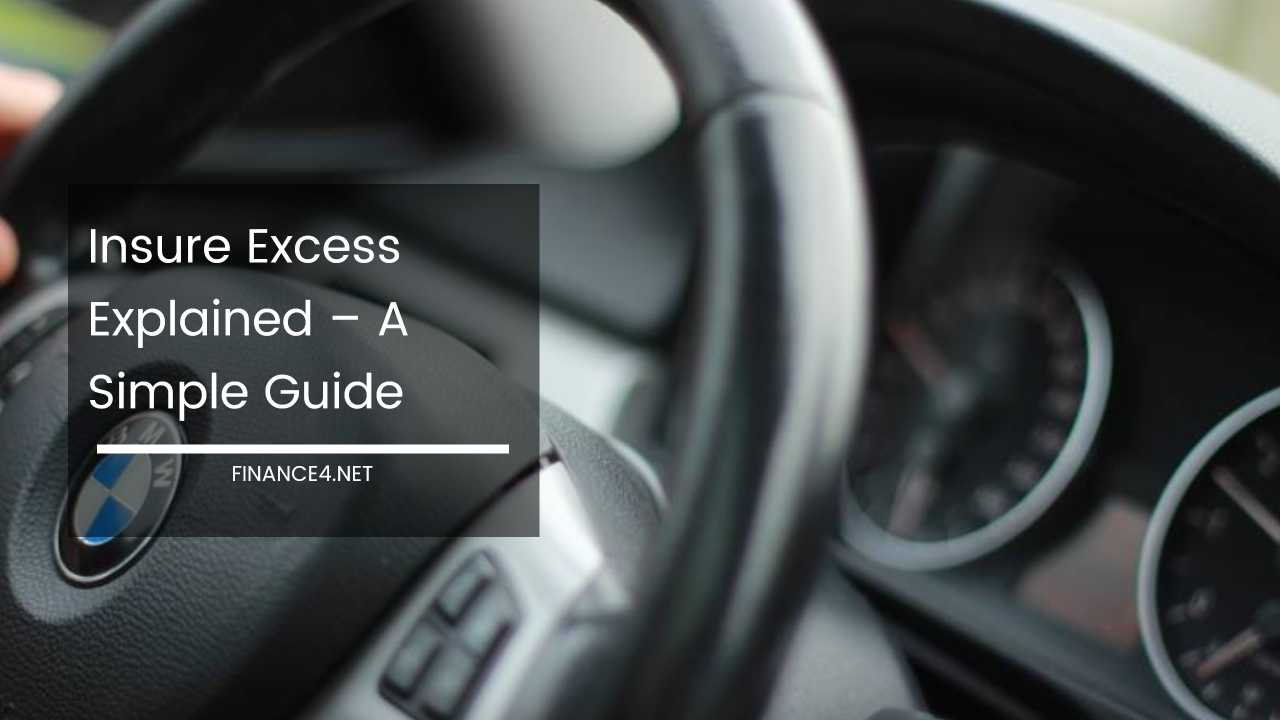Insure Excess Explained – Save on Car Insurance

Insure Excess Explained – A Comprehensive Guide to Navigating Car Insurance Costs
The world of car insurance can feel like a labyrinth of confusing terminology and hidden costs. One term you’ll inevitably encounter is “insurance excess,” often referred to as a deductible.
But what exactly does it mean, and how does it impact your wallet? This comprehensive guide will equip you with the knowledge to navigate the intricacies of insurance excess, empowering you to make informed decisions and potentially save money on your car insurance premiums.
Unveiling the Excess: Sharing the Repair Bill
An insurance excess is a pre-determined amount you agree to pay towards the cost of repairs or replacements following a claim.
It essentially acts as a financial buffer for the insurance company, discouraging a flood of minor claims that wouldn’t be financially catastrophic for you.
Imagine this scenario: you’re involved in a minor accident, and the repair bill comes to £500. Your policy has a £100 excess. In this case, the insurance company would contribute £400, with your excess of £100 covering the remaining amount.
This ensures you share the responsibility for smaller incidents, while the insurance company remains protected against excessive payouts for minor repairs.
The Two Faces of Excess: Compulsory and Voluntary
Within the realm of insurance excess, you’ll encounter two key terms: compulsory and voluntary excess. Understanding the distinction between them is crucial for making informed choices:
-
Compulsory Excess: This is a non-negotiable amount set by the insurance company and built into your policy. It’s the minimum you’ll always pay when making a claim. Factors like your age, driving experience, and the type of car you own can influence the compulsory excess level. Generally, younger or less experienced drivers face higher compulsory excesses due to a perceived higher risk profile.
-
Voluntary Excess: This is where you have some control. You can choose to add an extra amount on top of the compulsory excess. While this might seem counterintuitive, it presents a significant cost-saving opportunity. By opting for a higher voluntary excess, you can potentially reduce your insurance premiums by a considerable margin.
The Balancing Act: Lower Premiums vs. Out-of-Pocket Costs
The allure of a lower premium through a higher voluntary excess is undeniable. However, it’s crucial to strike a balance that aligns with your financial situation. Here are some key considerations:
-
Car Value vs. Excess Level: If your car has a lower value, a high voluntary excess might not be the wisest choice. In the event of a claim, the excess could eat into a significant portion of the car’s worth. For instance, if your car is worth £2,000 and you choose a £1,000 voluntary excess, a minor accident resulting in a total loss might not be financially worthwhile to claim.
-
Financial Buffer: Before opting for a high voluntary excess, honestly assess your financial preparedness. Can you comfortably handle paying a larger sum upfront if a claim arises? Unexpected expenses are a reality, and having a financial cushion can save you stress in the event of an accident.
-
Risk Tolerance: Consider your risk tolerance. Are you a cautious driver with a clean record? Or are you someone more prone to minor incidents? If you’re a relatively accident-free driver, opting for a higher voluntary excess might be a sensible way to save on premiums.
Excess Cover: A Safety Net for Unexpected Costs
Life can be unpredictable, and unexpected expenses are a reality. If you’re concerned about the burden of a high excess, you might consider excess cover, also known as excess waiver insurance. Essentially, it’s an add-on insurance policy specifically for your car insurance excess.
You pay a small premium alongside your regular car insurance, and in case of a claim, the excess cover company reimburses you for the pre-agreed excess amount.
Excess Cover: To Be or Not To Be?
Excess cover can provide valuable peace of mind. However, before diving in, it’s wise to do some calculations. Weigh the cost of the excess cover against the potential savings from choosing a higher voluntary excess.
In some cases, the cost of the excess cover might negate the benefit of a lower premium. Here are some additional factors to consider:
-
Frequency of Claims: If you have a history of making frequent claims, excess cover might not be the most cost-effective option. The additional premium for excess cover might outweigh any potential benefits.
-
Claim Type: Consider the types of claims you’re most likely to make. Excess cover typically applies to collision and comprehensive claims, but it might not cover other types of claims like theft or vandalism.
Negotiating Your Excess: While compulsory excess is typically set by the insurance company, it’s worth inquiring if there’s any room for negotiation, especially if you have a long history of safe driving, a clean record with no prior claims, or belong to a low-risk demographic (such as experienced drivers over a certain age).
Beyond the Basics: Additional Types of Excess
While compulsory and voluntary excess are the most common types, you might encounter a few other variations depending on your insurance provider and policy:
-
Named Driver Excess: This applies a different excess amount to named drivers listed on your policy, typically younger or less experienced drivers.
-
Age-Related Excess: Some policies implement an age-related excess structure, where the excess amount decreases as the policyholder ages and accumulates driving experience.
-
Windscreen/Glass Excess: This is a separate excess specifically applicable to windscreen or glass damage claims. It can be lower than the standard excess amount in some cases.
Making an Informed Choice: A Multi-Faceted Approach
Choosing the right insurance excess level requires a multi-faceted approach. Here’s a breakdown of the key steps:
-
Evaluate Your Budget: Assess your financial comfort level. Can you handle a higher upfront cost (excess) in exchange for lower premiums?
-
Consider Your Car’s Value: Balance the excess amount with the car’s overall value. A high excess might not be practical for a less valuable car.
-
Driving History and Risk Tolerance: Analyze your driving history and risk tolerance. A clean record and cautious driving habits might make a higher voluntary excess a viable option.
-
Compare Quotes: Don’t settle for the first offer. Get quotes from multiple insurers and compare their excess structures alongside the overall premium cost.
-
Explore Additional Coverage: Consider options like excess cover for added peace of mind, but weigh the additional cost against potential savings.
The Final Word: Striking the Perfect Balance
By understanding insurance excess and its various components, you’re empowered to make informed decisions when choosing car insurance.
Carefully consider your budget, car’s value, driving habits, and risk tolerance. By striking the perfect balance between compulsory and voluntary excess, and potentially utilizing tools like excess cover, you can secure a car insurance policy that’s both affordable and protects you financially in case of an unfortunate incident.
Remember, car insurance is there to provide peace of mind and financial protection – choose an excess level that aligns with your specific needs and circumstances.



